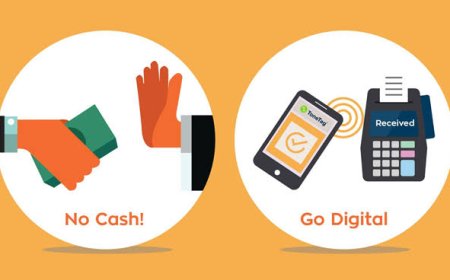The Role of Free Markets in Innovation
Discover how free markets foster competition, drive innovation, and ultimately improve our lives. Learn about the critical role of incentives, consumer choice, and limited government intervention in fueling economic growth.

Introduction
Have you ever wondered why some of the most groundbreaking inventions come from companies rather than government programs? Libertarians argue that free markets are essential for driving innovation, fostering competition, and improving quality of life. They believe that government intervention often stifles creativity and progress. Let's dive into how free markets play a crucial role in innovation.
Incentives for Innovation

Libertarian Perspective: The Power of Incentives
In a free market, the drive to innovate is directly linked to the incentives that entrepreneurs and businesses have to meet consumer demands. The possibility of financial gain motivates individuals and companies to think outside the box and develop new products and services.
Libertarian Stance: Real-World Examples
Think about how the tech industry exploded with innovations like smartphones, cloud computing, and social media platforms. Companies like Apple, Google, and Facebook were driven by the desire to gain a competitive edge and cater to consumer needs. These innovations emerged from environments with minimal government interference, highlighting the power of market-driven incentives.
Competition and Consumer Choice
Libertarian Perspective: Competition as a Catalyst
Competition in free markets pushes companies to continuously improve their offerings. This not only benefits consumers by providing more choices but also drives up the quality of products and services.
Libertarian Stance: Enhancing Consumer Welfare
Take, for example, the automobile industry. With numerous manufacturers vying for consumer attention, we've seen a steady stream of advancements in car safety, fuel efficiency, and design. This relentless competition ensures that consumers have access to the best possible options, encouraging ongoing innovation.
Government vs. Market-Driven Innovation
Libertarian Perspective: The Efficiency Divide
Government-funded projects often lack the efficiency and motivation seen in the private sector. Bureaucratic red tape and lack of direct profit incentives can lead to slower progress and less effective outcomes.
Libertarian Stance: Responsiveness to Market Needs
Private sector innovation, on the other hand, is highly responsive to market needs. Consider the pharmaceutical industry. Companies invest billions in research and development to create life-saving drugs. The competition to bring these drugs to market quickly and effectively often leads to better results with fewer resources compared to government-led initiatives.
Case Studies of Market-Driven Innovation
Libertarian Perspective: Historical and Contemporary Examples
Let's look at some industries where market-driven innovation has thrived:
-
Technology: The rapid advancements in personal computing, smartphones, and software development are driven by fierce market competition.
-
Pharmaceuticals: Private companies have developed groundbreaking treatments and vaccines, especially highlighted during the COVID-19 pandemic.
-
Telecommunications: The evolution from landlines to mobile phones to high-speed internet is a testament to the power of market competition.
Libertarian Stance: Superiority of Market-Driven Innovation
Consider the case of Tesla, which revolutionized the automotive industry with electric cars. Unlike government programs that often move slowly, Tesla's market-driven approach allowed for rapid development and deployment of cutting-edge technology, setting new standards for the industry.
Conclusion

Free markets are the engines of innovation, driving economic progress and improving quality of life. By reducing government intervention and fostering competition, libertarians believe that societies can achieve more dynamic and innovative economies. The examples we've explored highlight how free market environments spur creativity and efficiency, proving that when it comes to innovation, less government is often more.
FAQs
-
Why do libertarians favor free markets for innovation? Libertarians believe free markets create strong incentives for innovation by rewarding successful entrepreneurs and businesses financially.
-
How does competition influence innovation in free markets? Competition pushes companies to continually improve their products and services, benefiting consumers with better quality and more choices.
-
What are the drawbacks of government-led innovation? Government-led projects often suffer from inefficiency and lack of motivation due to bureaucratic hurdles and absence of profit incentives.
-
Can you provide examples of market-driven innovation? Sure! Examples include advancements in technology (smartphones), pharmaceuticals (COVID-19 vaccines), and telecommunications (high-speed internet).
-
How can reducing government intervention foster innovation? Reducing government intervention minimizes bureaucratic obstacles, allowing companies to respond quickly to market needs and invest more in research and development
What's Your Reaction?


















































